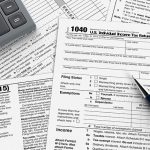“If I don’t want the money, why do I have to take it?” This question was posed by one of our clients after he received a required minimum distribution (RMD) notice in the mail. He had more than a few retirement accounts and had more than enough money to comfortably live on without making any withdrawals. He wanted to leave the money in the accounts for his family, his business, and his properties. He was banking on these accounts to preserve his legacy. But what he wanted didn’t matter when the IRS told him he had to start taking withdrawals from his accounts or face some pretty stiff consequences.
His case wasn’t unusual. We’ve encountered a lot of people in a similar position. In one study of 750,000 Fidelity IRA customers, it was found that by year’s end, about 68% of people who should have taken RMDs hadn’t done so. But why? In some cases, it might be ignorance, but in others, many people don’t know what to do with the money if they take it out. Lower risk, tax beneficial accounts might not be available to reallocate the funds, and it’s generally not a good idea to go with high risk investments later in life. This is where life insurance plays an important role by providing a great option for people who want to continue growing their funds after taking RMDs.
Understanding Your Required Minimum Distribution
The RMD applies to most retirement accounts. On April 1 of the year after you turn 70½ you will be required to take a minimum distribution amount or face a large tax penalty. After that, you’ll have to take an annual distribution by the end of every year.
How much you’ll be required to take out will depend on a calculation based on your applicable accounts, their overall balance, and your life expectancy. RMDs apply to just about all retirement accounts except for the Roth IRA.
If you don’t take out the RMD by the close of the calendar year, you could face fines of up to 50% of the amount you were supposed to withdraw. When you do make withdrawals, the money will be taxed as ordinary income, which might push you into a higher tax bracket. Either way, you will have to take a loss. But you can lessen that loss by putting your RMD in the right place: a life insurance policy.
Options for Managing Required Minimum Withdrawals
Required minimum withdrawals can be tricky for reinvesting because even though they’re taxed as ordinary income, they’re not considered earned income by the IRS. There’s also an age limit for making contributions to any account considered a retirement account, and if you’ve reached RMD age, you’ve met the limit. This means RMDs can’t be reinvested into many tax beneficial accounts, so taking the money out and putting it right back in won’t work.
As you get older, you also want to reduce your risk, so reinvesting it all into stocks might not be the best choice. When it comes to reinvesting RMDs, lots of people choose to go with safer, more secure options like bonds, money market accounts, and mutual funds. While these might give some great gains, those gains could also create more taxable income to deal with later. That taxable income will ultimately affect your estate and your heirs.
If you want to reallocate your RMDs and grow your family’s ultimate wealth and legacy, but also want to avoid a hefty estate tax in the future, you can put that money into a life insurance policy, but there are a few things to be aware of when you do this.
Using Life Insurance to Grow Your Wealth Beyond Your Life
For people who want to grow their wealth beyond their life and turn those RMDs into a legacy, a permanent life insurance policy is a dependable place to put those funds. Generally, people take advantage of this option one of two ways: either with a standard life insurance policy or by managing policies with a life insurance trust.
The easiest method is with a standard permanent life insurance policy. With a permanent life insurance policy, you pay money into the policy and it’s allowed to grow on a tax-deferred basis. As long as you continue to pay your premiums, this permanent life insurance will remain in effect so you can strategically reallocate those RMDs and they can continue to increase your wealth. When you pass away, the beneficiary of the life insurance policy won’t have to pay taxes on the proceeds of that policy.
That said, if the policy is in your name, it will be considered part of your estate and will be subject to estate tax. That means your beneficiaries will have to deal with the burden of that additional tax. That’s why individuals who do this often choose to transfer the ownership of the life insurance policy to someone else.
Of course, this can get tricky, because the IRS states that the ownership must be completely transferred. This means you can’t have “incidents of ownership” at the time of your death. Incidents of ownership mean that you have control over the policy when it comes to who can be added and removed. The policy also can’t be transferred to a spouse because the proceeds they receive would be considered part of the estate. Finally, the three-year rule requires that the policy must have been transferred more than three years prior to your death, otherwise the policy is considered part of your estate. The murkiness of the rules regarding these transfers is why many people choose to instead put their life insurance policies in an irrevocable life insurance trust, or ILIT.
The Power of the ILIT
If you’ve received the RMD notice, then you probably have an IRA. A life insurance trust is like your IRA. Your IRA isn’t an investment itself, but rather the account that holds your investments. A life insurance trust is similar to that, because it isn’t a policy itself, but an account that holds policies. This is an important distinction because the trust is set up under an entity name, not your own. Once the policies are in the trust, they become assets of the trust and are no longer considered your assets.
The trust becomes a beneficiary and the entity responsible for managing the funds, purchasing and holding policies, filing the claims at the time of your death, and making the payments out to your surviving heirs. The trust is managed by a trustee who is responsible for handling all of this. You cannot be the trustee and it’s not recommended that a spouse be a trustee, either. Often, the trustee winds up being a family member other than a spouse, or a CPA or other financial professional.
If you’re considering more than one life insurance policy, it’s often easier and better to buy those policies through a trust. In the case of one policy, you could simply transfer ownership of the policy. Keep in mind, whatever choice you make, the “incidents of ownership” still apply, in that the changes must be made irrevocably.
For simplicities sake, if you’re dealing with RMDs, you could continue purchasing policies with your allocations every year, and put those policies into a trust to limit your estate tax and help carry on your legacy.
Your best bet if you’ve gotten the notice that you need to start taking RMDs is to talk to a qualified financial planner. If life insurance is something that interests you, our expert advisors can help you look into the various options available to you. Just because you don’t need the money now doesn’t mean you can’t use it to secure your legacy in the future. Life insurance could be the best choice to make those RMDs grow your wealth beyond your life. Call us at 800-DIE-RICH to learn more.





